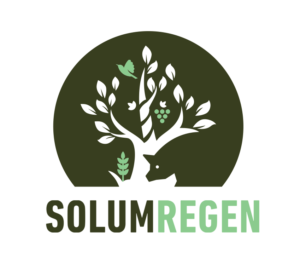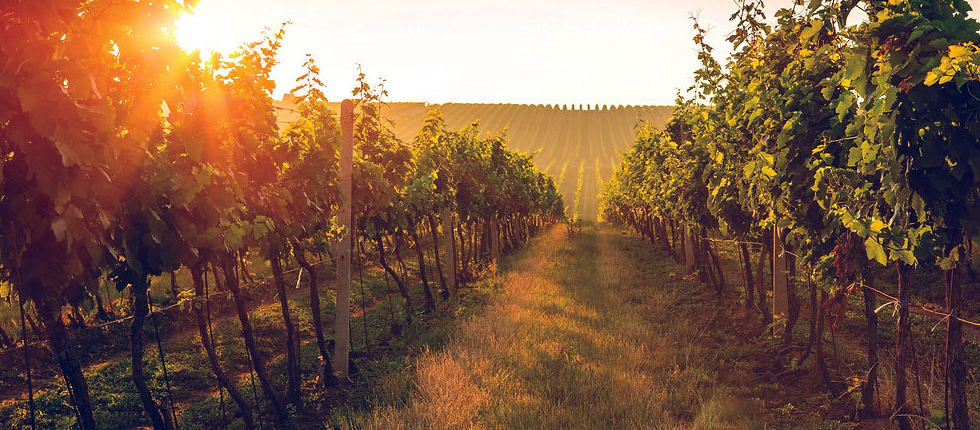How to transform a conventional vineyard into a regenerative and ecological vineyard
Regenerative Winegrowing
As a consequence, the wine sector in Spain is leading a movement to convert in to regenerative agriculture. The association for Regenerative Viticulture has recently been founded, of which two annual meetings have already been held, and with such renowned participants as Bodegas Torres, Clos Mogador, Can Feixes, Abadal, Recaredo, among many others. This movement for the restoration of the soil is sometimes limited by the previous culture of crop management according to the characteristics of the environment, and the lack of experiences in the area.
At Solum Regen we accompany the conversion of these conventional, organic or biodynamic vineyards to regenerative management, preserving or improving their certification and production.
Our field work, designing, planting and accompanying new vineyards, as well as directing and transforming the management and possibilities of already established plantations, allows us to work side by side with wineries to put into practice the benefits of regenerative agriculture.
How do we transform a conventional vineyard into a regenerative vineyard? We have prepared a simplified guide of the most important steps we need to take to obtain all the benefits of regenerative agriculture, the benefits of which are structuring soils, infiltrating and retaining water in soils, increasing carbon and organic matter, avoid erosion and soil loss and reduce production costs by reducing phytosanitary treatments against pests and diseases. Although each terrain requires a specific perspective and knowledge, there are certain limiting factors and available resources, but we can generalize by proposing 5 steps to carry out the transformation.
5 steps for transformation and reconversion
1 – Subsoiling
Over the years it has become evident that the compaction generated by the systematic tillage of soils generates a tillage sole that prevents the roots from going deeper and also prevents water from infiltrating properly. Tillage is also responsible for the loss of soil structure, since by doing so the humus becomes mineralized and causes the lose of its ability to generate aggregates. Therefore, minimizing and progressively reducing intensive tillage is one of the first actions that we will have to consider. In this process of recovering the natural morphological characteristics of the soil, it is important to break the working sole. At Solum Regen we generally recommend subsoiling before planting a groundcover. In this way we ensure that the roots and water can begin to work throughout the layers of soil and the aerobic microbiology can reproduce more quickly to generate aggregates.
2 – Cover crops / Green manure
One of the best investments to increase fertility and improve the infiltration and water capture capacity is green manure or cover crops. Although historically adventitious grasses have been avoided because they were competition for our crops, today we know that the benefits of a selection of species that allow us to work and make production compatible with the availability of water and nutrients are many. For example, we increase the carbon in soils to have more fertility, we decompress and till soils biologically through plant roots, and we protect the soil from overheating in times of drought. The proper selection of plants, timing and management of covers is the key to the success of this second tool. For more than 10 years we have been working with green manure and we have been able to verify the benefit of many of the seed mixtures that we can use to achieve this improvement in the productivity of the plants and, at the same time, the improvement of the soil.
3 – Fertility in the regenerative vineyard
The main reason for using non-synthetic organic matter as a source of fertility is to increase beneficial biological activity. By creating the right conditions in the soil, food chains are reactivated and fertility increases. Sources of organic matter to fertilize can come from animal manure, plant remains, animal grazing at favorable times, and, of course, green manures. It is important to keep in mind that each context is different and an adequate design of the sources and regularity of application of organic matter has to be planned to make this progressive transformation without losses.
4 – Management and scheduling
Most farmers already have a schedule and structure for the work and tasks in the vineyards. Thanks to these habits, we can easily adapt to these new regenerative practices, understanding the change in context and the different management needed.
For example, just before the heat arrives and the covers begin to sag, we must lay down the plant cover with a roller with additional weights, or cut it to leave it as mulch and suddenly stop photosynthesis that could generate competition with the vines . The introduction of animals during the dormant periods of the vineyard can also be a tool that allows us to help the vegetation cover to make a more homogeneous regrowth and increase manure and urea for the next growing season. Introducing animals cannot be done at any time, it is a clear example of how important it is to schedule.
5 – Pests and diseases in the vineyard
Despite the rusticity of the vines, it is common to protect or treat against fungi or pests. Usually these pests and diseases are a consequence of a lack of biodiversity, nutrients or even weakness of the plants. Another of the tools that we promote in regenerative agriculture is the inclusion of biodiversity to regulate many of these problems. We can achieve this by adapting our land to include auxiliary plants that have various systemic benefits. We are talking not only about herbaceous plants, but also about bushes, trees or small stone corners or ponds that improve the whole ecosystem.
Conclusions
Regenerative agriculture is a tool that provides us with many benefits: reducing costs and dependencies on external inputs, increasing the resistance of our crops to heat waves and torrential rains, obtaining a better presentation of our products and avoiding the loss of fertility and soils caused by erosion. Due to our experience in different countries and continents with regenerative vineyards, we encourage this conversion in any context. Here we have set out some of the most general points, to help visualize this exciting process. At Solum Regen we do not believe that there is an impossible field and we will always be at your disposal to accompany this improvement of your soils and crops.

